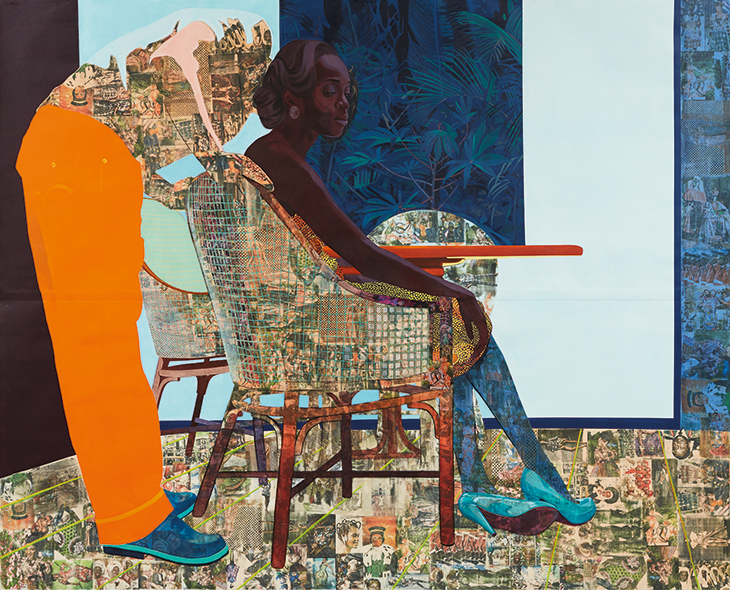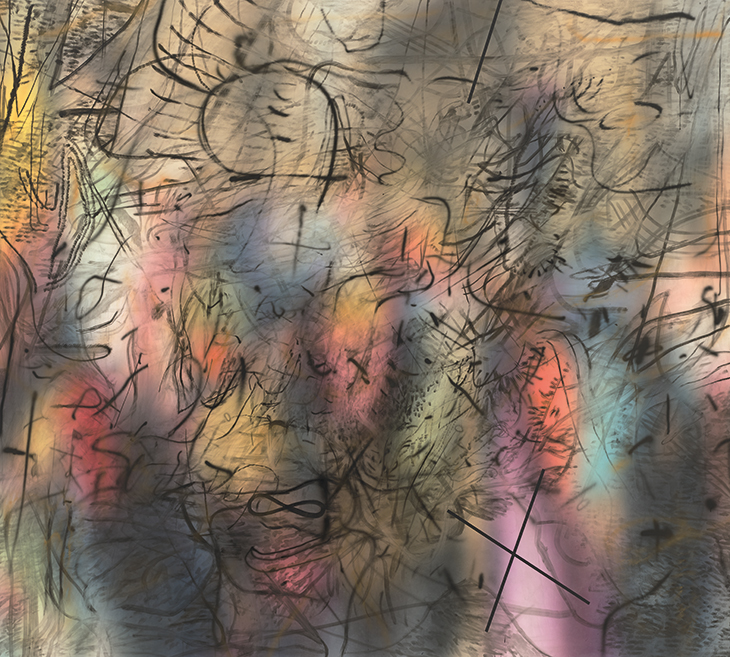In his curatorial statement for the 56th edition of the Venice Biennale, held in 2015, Okwui Enwezor described a global landscape ‘shattered and in disarray’. His approach to the mammoth, maddening task of bringing together a vast range of contemporary international art within a single exhibition was informed, Enwezor claimed, by the sense that ‘everywhere one turns new crisis, uncertainty, and deepening insecurity across all regions of the world seem to leap into view’. For Enwezor, artists could help us make sense of social disquiet and violent turmoil. By contrast, many critics found his resulting exhibition, titled ‘All the World’s Futures’, depressing and difficult, with too much political content. Laura Cumming in the Observer, for instance, complained: ‘It feels more like a glum trudge than the usual exhilarating adventure.’
Confronting our situation in 2019, it’s easy to conclude that, if anything, Enwezor underplayed a global state of crisis, and his own recent death deepens the gloom still further. The 58th edition of the Venice Biennale, which runs from 11 May to 24 November, appears at a moment of extraordinary social and cultural upheaval, when the relationship between art and politics faces almost unprecedented scrutiny. It’s a context acknowledged by this year’s Biennale curator, Ralph Rugoff, only the second American to hold this prestigious role. Rugoff, who is director of the Hayward Gallery in London, begins his curatorial introduction to the 2019 Biennale by noting that ‘the news cycle spins from crisis to crisis’. How might artists today respond to this chaotic situation? What can the 600,000-plus visitors likely to descend on the Biennale expect to experience?

And We Begin to Let Go (2013), Njideka Akunyili Crosby. Photo: Jason Wyche; courtesy the artist, Victoria Miro, and David Zwirner; © Njideka Akunyili Crosby
The first clue comes from the wry title of the central exhibition: ‘May You Live in Interesting Times’. It’s a proverb with a mysterious and contested provenance. Rugoff refers to its use in a speech given in the late 1930s by the British MP Austen Chamberlain, who claimed it was an ancient Chinese curse, and it has been adopted by politicians from Robert F. Kennedy to Hillary Clinton. But there’s little evidence that the phrase originated in China, and for Rugoff its murky and uncertain history opens up a productive way of thinking about contemporary battles with ‘fake news’, ‘alternative facts’, and ‘post-truth’ politics. Rugoff’s rhetoric also suggests an emphasis on artworks that encourage conversation, curiosity and alternative readings. Dialogue, rather than didacticism, is the watchword.
The exhibition’s impressive selection of international artists also indicates particular curatorial leanings, and a somewhat stripped-back approach. Rugoff has invited around 80 artists to show work, compared with the 136 chosen by Enwezor in 2015 and the 120 selected by Christine Macel for the 2017 edition. This year’s chosen artists are all living and currently working, and 30 of them were born since 1980, suggesting a specific emphasis on emerging practices that engage with our own ‘interesting times’. Painting is especially well represented, from Nicole Eisenman and Njideka Akunyili Crosby to Julie Mehretu; there’s a strong group of film-makers, including Apichatpong Weerasethakul, Arthur Jafa and Kahlil Joseph; and digital practices will be highly visible, via the likes of Ed Atkins, Ian Cheng, Hito Steyerl and Dominique Gonzalez-Foerster (who will make the first-ever virtual reality piece commissioned by the Venice Biennale).

Sing, Unburied, Sing (J.W.) (2018), Julie Mehretu. Photo: Tom Powel; courtesy the artist, Marian Goodman Gallery, New York and White Cube, London; © Julie Mehretu
Perhaps the most innovative aspect of Rugoff’s approach is his decision to divide the Biennale into two separate exhibitions, or ‘propositions’, as he terms them. One proposition will be held in the complex of former shipping and industrial sites known as the Arsenale; the other within the central pavilion located in the Giardini parklands. Although these propositions will maintain very different atmospheres, Rugoff insists that work by all 79 artists will appear at each site, offering visitors an experience of two contrasting exhibitions. It’s another gesture towards multiple voices and different perspectives, and a rejection of singularity and fixed narratives.
Beyond the main exhibition, there will be opportunities to see the work of more than 200 artists featured in the national pavilions at the Arsenale and Giardini, and in various interventions around Venice. Given the resurgence of toxic nationalist movements around the world, we might expect to see artists challenging reductive notions of national identity, and a spotlight on borders and walls can be anticipated, too. Fresh from her Turner Prize win, Charlotte Prodger will screen a new film in the Scotland + Venice Pavilion in the Arsenale docks, while in the British Pavilion, which occupies a former tea house built in 1897, Cathy Wilkes will present a large and entirely new body of work, including sculptures, installations and paintings, across six rooms.
But the most enticing of the national pavilions comes from a country making its Biennale debut. Ghana’s first national pavilion will sit within an earth-plastered structure designed by the architect David Adjaye. Inside, six artists of Ghanaian descent will display work, including the sculptor El Anatsui, the film-maker John Akomfrah and the painter Lynette Yiadom-Boakye. It’s a remarkable assemblage of talents, which speaks to historical and geographical movements, cultural exchange across borders and boundaries, and multimedia artistic experimentation. That the project was developed with Okwui Enwezor as its strategic adviser is both unsurprising and a fitting way to mark his continued influence on how we think about the relationship between art and politics, in Venice and beyond.
From the May 2019 issue of Apollo. Preview and subscribe here.
This article was corrected on 22 May 2019. A previous version stated that Dominique Gonzalez-Foerster’s virtual reality work was made In collaboration with Joianne Bittle; their collaboration was on another work at the Biennale.














![Masterpiece [Re]discovery 2022. Photo: Ben Fisher Photography, courtesy of Masterpiece London](http://zephr.apollo-magazine.com/wp-content/uploads/2022/07/MPL2022_4263.jpg)
Suzanne Valadon’s shifting gaze